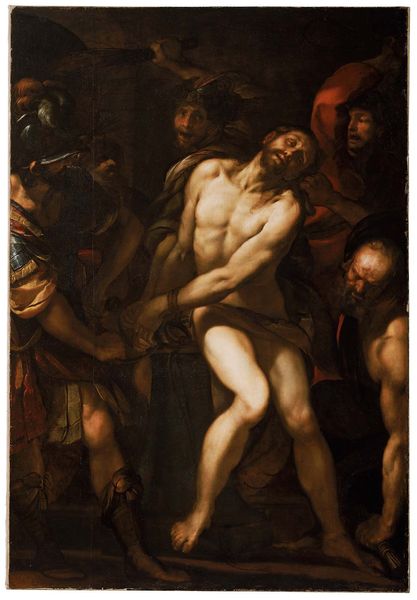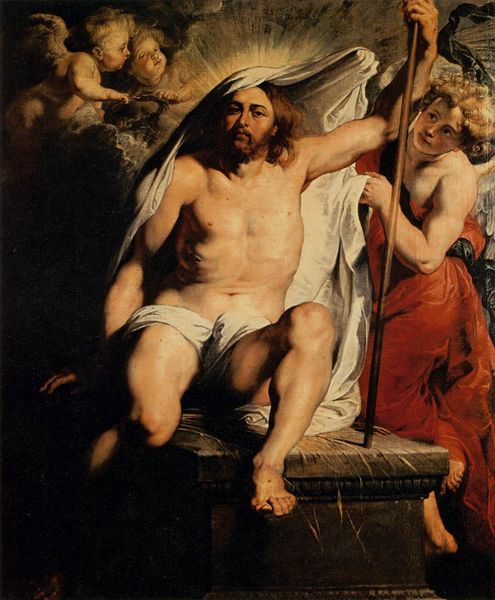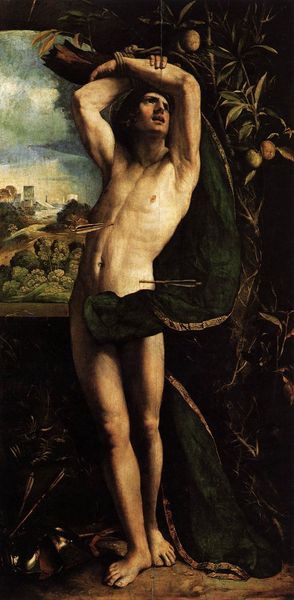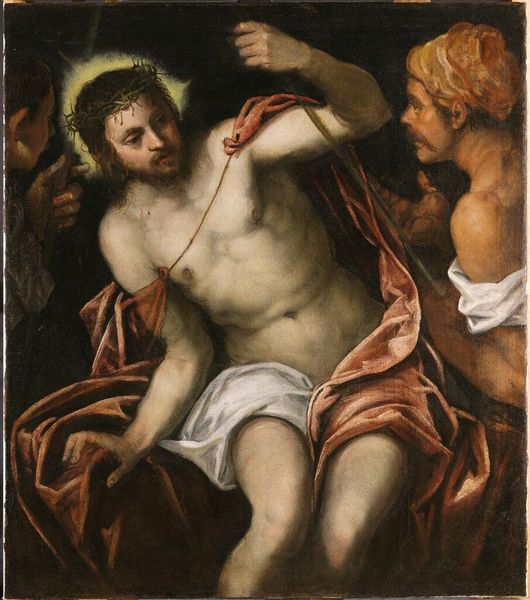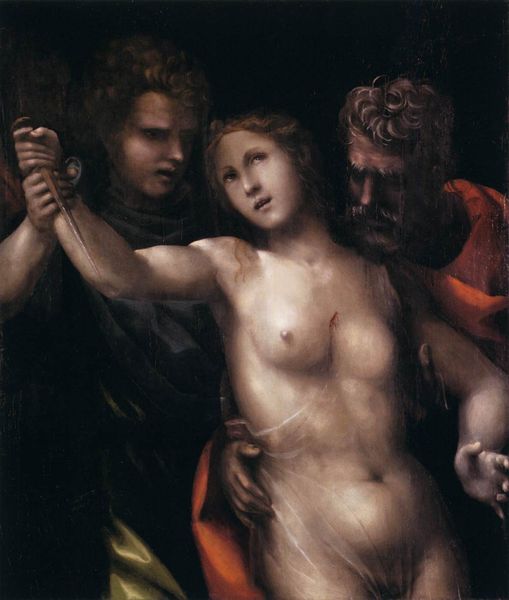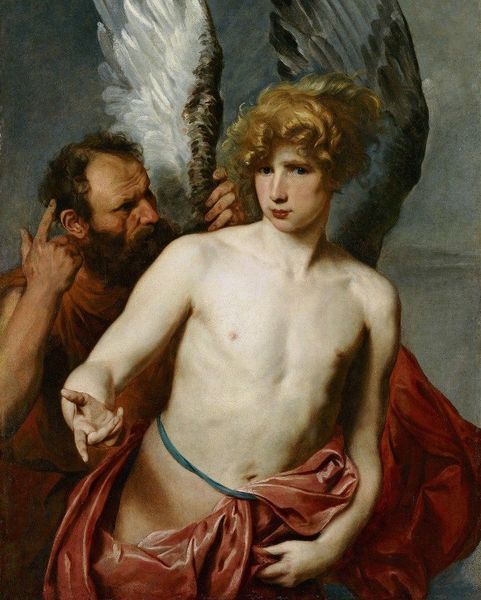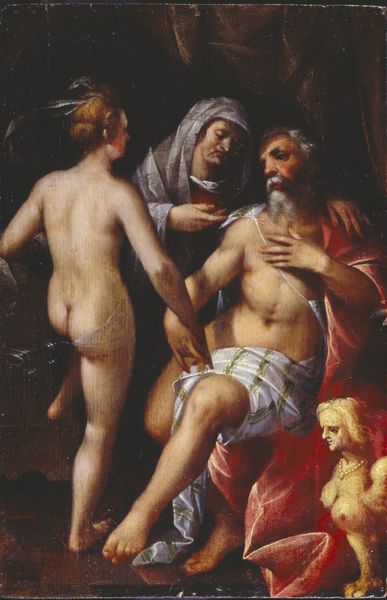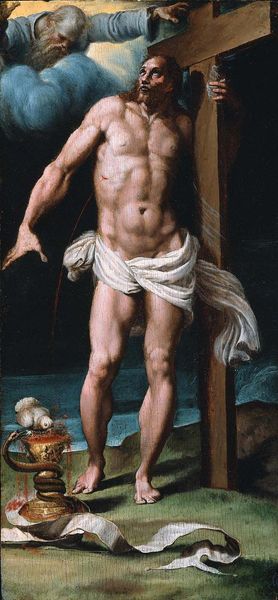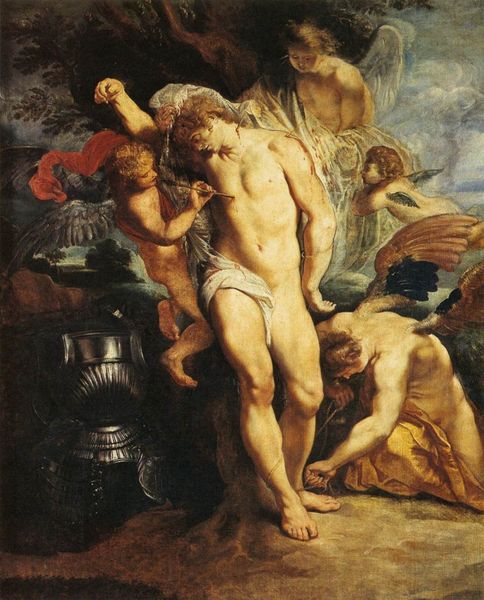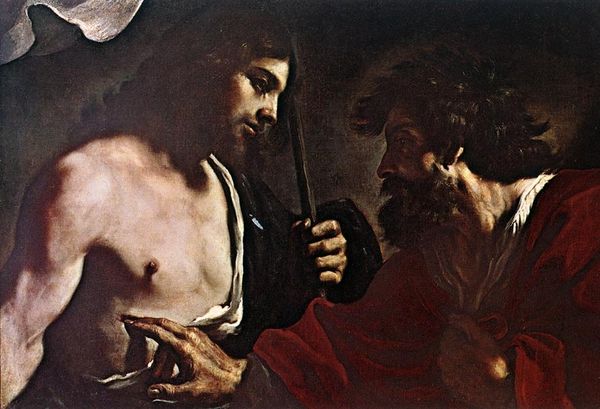
painting, oil-paint
#
portrait
#
painting
#
oil-paint
#
mannerism
#
figuration
#
jesus-christ
#
chiaroscuro
#
history-painting
#
male-nude
#
angel
#
christ
Copyright: Public domain
Editor: This is Rosso Fiorentino’s "Dead Christ with Angels," painted in 1526. The oil paint lends the scene a soft, almost dreamlike quality, but there's also a strange tension in Christ's pose. It's not traditionally mournful, it almost feels… defiant. What do you see in this piece? Curator: It's a powerful work, isn’t it? Beyond the Mannerist style with its exaggerated figures and theatrical lighting, consider the socio-political context. The 1520s were a time of immense upheaval – the Sack of Rome, the rise of Protestantism. This Christ isn't passively suffering; there's a visceral, human struggle evident in his body. Think about how Fiorentino is perhaps questioning the Church, reflecting a period of intense social and religious reevaluation. Do you perceive a challenge to conventional representations of Christ’s death here? Editor: I do see that tension. It's almost like Christ is bracing himself against something, or about to push back. It's not the peaceful image I usually associate with the subject. The angels, too, seem more inquisitive than grief-stricken. Curator: Exactly! Their expressions aren't simply mournful; they reflect a moment of reckoning. Fiorentino is disrupting the traditional narrative. Look at the positioning of Christ’s body, the unflinching gaze of some of the angels…it is charged with the uncertainty and intellectual ferment of the time. The male nude becomes not just a representation of suffering, but a symbol of defiance. Does understanding the history shift your initial interpretation? Editor: Definitely. Seeing it as a product of religious and political turmoil makes the painting even more compelling. I initially just saw a somewhat strange composition, but now I see so much more depth and questioning. Curator: It reminds us that art is always in dialogue with its time, reflecting and refracting societal anxieties and aspirations. Considering the artwork through a broader intersectional lens enriches our understanding.
Comments
No comments
Be the first to comment and join the conversation on the ultimate creative platform.
